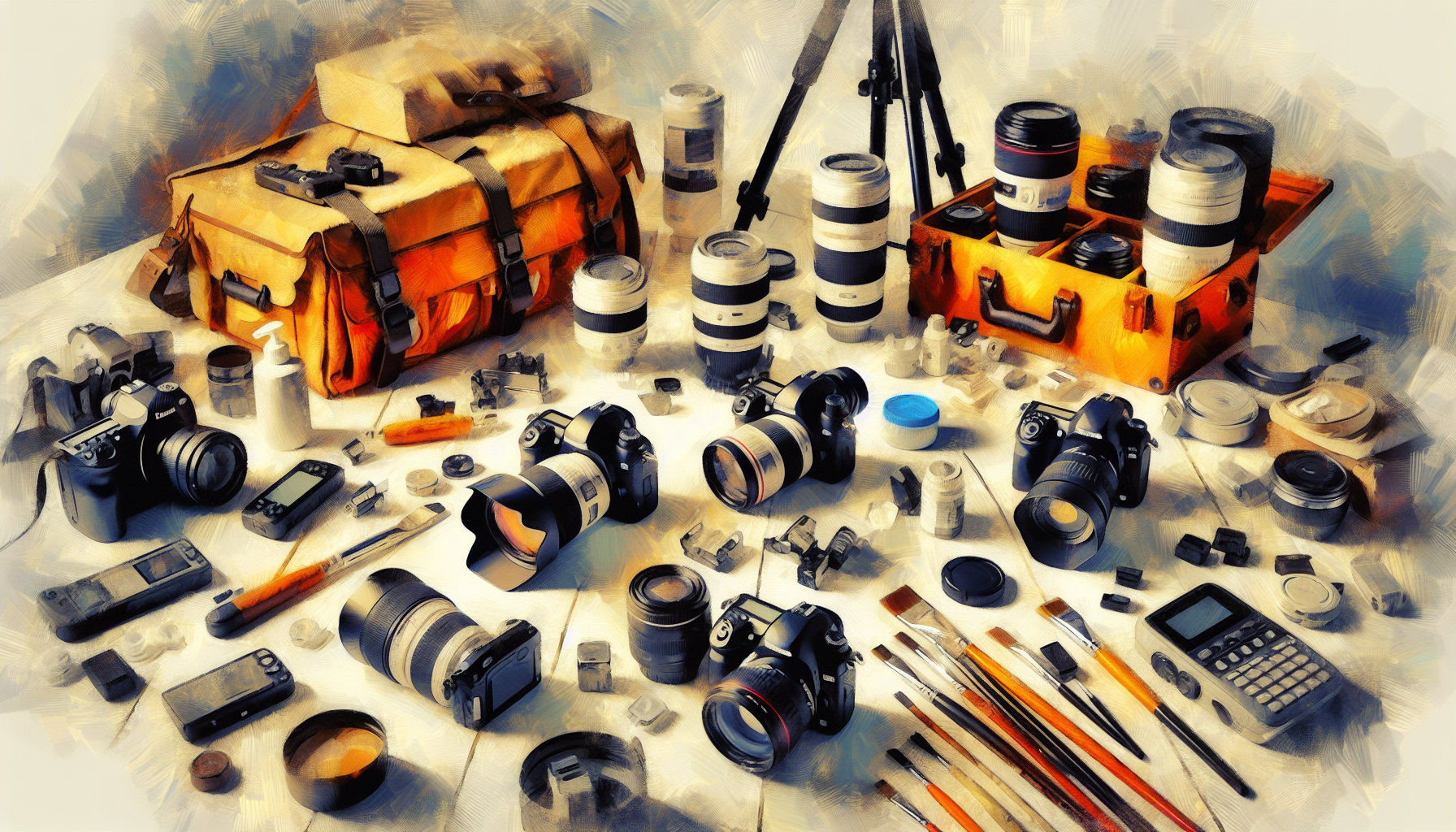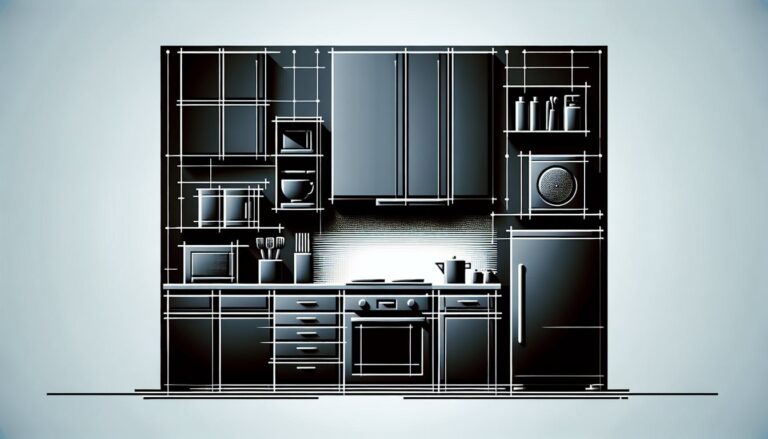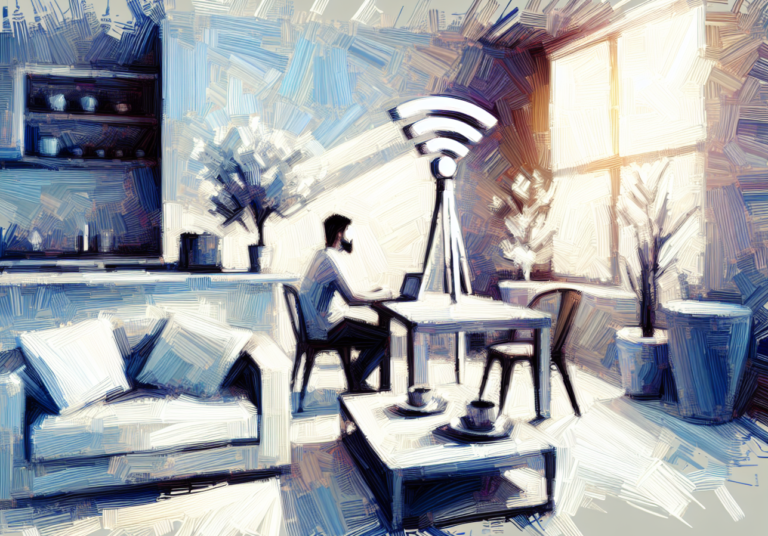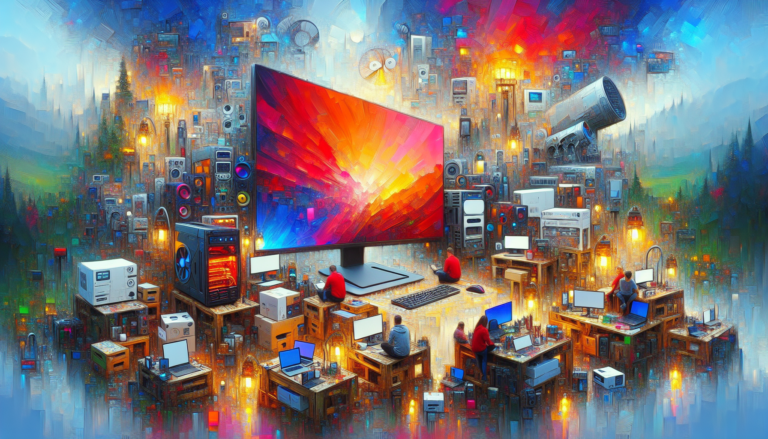Illuminate Your Photography Skills: How to Decide on a DSLR Camera for Beginners
Understanding Camera Sensors
Picking a DSLR camera for newbies? Grab the lens cap and buckle up—knowing your camera sensors is like taking off training wheels. These little rectangles make all the magic happen, turning scenes into snaps. We’re gonna dive into why size matters when it comes to sensors, and the types you’ll see in those snazzy DSLR cameras.
Why Sensor Size Matters
When it comes to sensors, bigger is like mom’s leftover lasagna—always better. A larger sensor means it can soak up more light, which translates to sharper, more vibrant photos. You’ll get richer details, punchy contrasts, and those dreamy lights and darks. It might sound like gobbledygook now, but trust me, it’s what separates an “Ok” shot from a “Wow, did you take that?”
For those just getting cozy with a camera, knowing your sensor size is like having a secret weapon. Full-frame sensors are the big guns, roughly the size of a 35mm film (35.00 x 24.00mm, if you’re into specifics). You’ll find them in cameras by the big dogs like Sony, Canon, and Nikon. They’re the go-to for folks aiming to level up their photo game.
Different Types of Camera Sensors
-
Full-Frame Sensors: It’s like your camera’s going to the gym, these chunky boys (35.00 x 24.00mm) pack a punch. Favored by pros, they give you crisp images and top-notch performance.
-
APS-C Sensors: These are the middle kids of the sensor family, clocking in at around 23.60 x 15.60mm. They’re ideal for those taking a step beyond the point-and-shoot stage. Brands like Canon, Nikon, Fujifilm, and Sony love popping these in their more approachable models.
-
Micro 4/3rds Sensors: They’re like a secret upgrade from the ol’ fixed lens style, coming in at about 17.00 x 13.00mm. If you dabble in creativity, Panasonic and Olympus have the goods to tickle your fancy, with these sensors in their lineup offering a nice balance of quality and flexibility.
Each sensor size gives you something different, with full-frame sensors really shining when it comes to those crisp details—perfect for when you’re blowing up shots or making them postcard-worthy. Before clicking ‘buy’ on a new DSLR, think about what kind of photos you wanna take and find a sensor that’s gonna nail it.
Factors Affecting Image Quality
Looking to snag your first DSLR? Knowing what makes a picture pop is like finding the holy grail of photography. Three big things to keep in mind are megapixels, dynamic range, and ISO performance. Yep, those tiny details make all the difference.
Megapixels and Image Quality
You might have heard the bigger the better when it comes to megapixels, but that ain’t always true. According to Dave Morrow Photography, cramming in more pixels doesn’t guarantee a masterpiece. Seriously, a 20-megapixel camera is already good enough to print your photos as big as a coffee table book without losing detail.
While tons of megapixels can help when blowing up pictures or cropping them down, they might throw a fit in the dark. Ever notice those grainy pics? Blame it on noise from a high-megapixel sensor trying to work in low light. As Digital Photography School puts it, more megapixels often means more noise with high-ISO settings. So, think about what you plan to shoot before slapping down cash for all those extra megapixels.
Dynamic Range and Image Quality
Dynamic range is a fancy way to say how much your camera can handle bright and dark stuff at once – kinda like seeing both the sunlit mountains and shady valleys in one shot. Dave Morrow Photography defines it as the spectrum between the highest and lowest light the sensor can catch without blowing out or losing detail.
Nailing a camera with a solid dynamic range ensures you won’t end up with washed-out highlights or murky shadows, especially while capturing those dramatic, contrasty scenes. You’ll get pics with just the right mix of light and dark that keep things crisp and clear.
ISO Performance
ISO controls how your camera sensor reacts to light. Bump up the ISO in low light and you see everything without a flash, but crank it too high and you get noisy images. Dave Morrow Photography mentions that a higher ISO means less dynamic range and more noise. So, you need less light, but your photos look grainy.
When picking a camera, beginners should pay attention to how it handles ISO. Days will vary from bright sunshine to dim candlelit dinners, and knowing how ISO plays into your pictures can guide you to the camera that’s just right for your shooting style.
Choosing the Right DSLR Camera
Gonna be straight with ya, picking the right DSLR is sorta like searching for that perfect pair of shoes – it’s gotta fit just right. We’re diving into why these cameras have got photo-lovers buzzing, and whether they’re your soulmate in the world of clicks and snaps or a brief fling better compared to their mirrorless cousins.
Overview of DSLR Cameras
DSLRs aren’t just letters in a fancy acronym — they’re the real deal when it comes to snapping top-notch pics. These babies come with an optical viewfinder, meaning you see exactly what your lens sees, making say cheese moments a breeze— no surprises here. Their design fits snug in your hands like they were born for it, especially handy for those joining the photography party.
Whether you’re chasing sunsets, nailing portraits, or spying on squirrels in action, DSLRs give you a buffet of lens options to play with. Feel like a wide-angle superhero or a telephoto wizard? The range of choices lets your creativity fly higher than a drone on vacation.
Advantages of DSLRs
Here’s the scoop: DSLRs rock when the lights go down. With bigger sensors and snazzy processors, they capture dreamy shots without making you flash folks like a disco ball (Crutchfield). Plus, you’re the boss of settings like aperture, shutter speed, and ISO. Call it creative freedom or just plain fun.
These cameras are also steady Eddies. Built-in or lens-based stabilization helps keep your shots sharp minus the shakes – a lifesaver in dim rooms or jittery hands (Crutchfield).
DSLRs vs. Mirrorless Cameras
Mirrorless cameras are the new kids on the block but are giving the mirror-toting DSLRs a run for their money (Digital Photography School). They pack a punch with things like electronic viewfinders and stealthy snapping for when you don’t want to scare off the wildlife. Video skills on these are often top-tier, something a lotta DSLR fans are side-eyeing with a bit of envy.
Nonetheless, DSLRs are still asserting their superpowers. They’re known for outstanding battery life— those tiny mirrorless batteries often don’t last a day of clicking. Plus, the feel and fit of a DSLR along with a treasure trove of lenses can make them a real steal, especially used. So, new photographers, think of what you want to achieve, but remember, the lens often outshines the camera body in delivering those awesome shots (Rtings).
In this showdown between DSLRs and mirrorless, it all comes down to what tickles your creative fancy and fits your budget. Image quality, comfort in holding, the lens library, and cash in the pocket are big players in choosing your gear. Need some shopping tips? Check out a complete buying guide for consumer electronics enthusiasts for more.
Best DSLR Cameras for Beginners
Starting with photography and need a trusty DSLR camera to capture those breathtaking moments? Here are some of the best choices if you’re just diving in: Canon EOS Rebel T8i/850D, Nikon D5600, Canon EOS Rebel SL3/250D, and the Nikon D3500.
Canon EOS Rebel T8i/850D
The Canon EOS Rebel T8i/850D is tailor-made for rookie photographers. It’s got a bag full of features to make snapping pics both fun and rewarding. This camera works with both crop sensor and full-frame lenses, giving you plenty of room to experiment with different shots and styles. It packs an impressive autofocus system and shoots 4k video, so whether it’s capturing the sweeping beauty of a sunset or the fast pace of a soccer game, it’s got you covered. Want more juicy details? Check out our electronics enthusiast guide.
Nikon D5600
If you’re after a DSLR that strikes a balance between quality and price, the Nikon D5600 should be on your radar. It’s got a high-resolution APS-C sensor and works with both Nikon DX and FX lenses, letting you upgrade your gear as you hone your skills. The fully articulated screen and easy-to-use interface make it a breeze for beginners. It might not be the fastest on the block with its max burst rate, and the autofocus could be a bit zippier, but trust me, it’s a reliable pick for those starting out. Curious? Swing by our gaming monitor guide to uncover more about the Nikon D5600.
Canon EOS Rebel SL3/250D
On a budget but don’t want to skimp on quality? The Canon EOS Rebel SL3/250D steps up. It’s a top-notch budget DSLR, packing in quality and performance. With 4k video capabilities, quick burst shooting, and dependable autofocus, plus a design that’s light and portable, it’s a steal for new shooters. Sure, it might have fewer buttons and dials compared to the pricier models, but hey, it’s all about finding that sweet spot between cost and features. Want to know more? Our battery life guide spills the beans on the Canon EOS Rebel SL3/250D.
Nikon D3500
If simplicity is your game, then the Nikon D3500 is your camera. Designed to be straightforward without compromising on the quality of your shots, it’s a gem for beginners. It’s got an attractive price, it’s lightweight, and it comes with a user-friendly interface and a ‘Guide’ mode that takes you by the hand through photography basics. So, even if advanced stuff like 4k recording or a flip-out screen isn’t your thing, the Nikon D3500 delivers stunning image quality and battery life that just keeps going. Want to get more bang for your buck? See our PC optimization tips for a look into the Nikon D3500.
Factors to Consider When Choosing a DSLR
So, you’re diving into photography, and you’re eyeing a DSLR? Let’s take a walk through the stuff that truly matters so you end up with a camera that’s going to make every click feel like magic. You know, getting the right sensor size for awesome pics, making sure the camera feels like it was made just for you, and having some sweet lens choices.
Sensor Size and Image Quality
First off, let’s talk sensors. This is where the magic begins. Bigger sensors? Oh yeah, they mean snappier snaps. Those big-name brands like Sony, Canon, and Nikon have full-frame sensors in their top-of-the-line cameras—it’s like having a VIP pass to pro-level photography heaven. You’ll get super clear images with vibrant colors and all those little details that make a photo pop.
But hey, if you’re just getting started and not looking to break the bank, APS-C sensors might be more your vibe. They’re like the cool kids of the camera school—good balance of quality and cost. Canon, Nikon, Fujifilm, and Sony have some great options with these sensors. They get the job done without making your wallet cry.
Ergonomics and User Comfort
Let’s not forget how the camera fits in your hands. You wouldn’t walk around in shoes two sizes too small, right? Same deal here. The camera should feel like it was tailor-made for you. Check out how the grip feels, where all those buttons are hanging out, and just how easy it is to lug around. If you’re gonna be shooting all day, you want something cozy, not a brick. Comfort translates to creativity when you’re snapping away for hours.
Lens Options and Image Stabilization
Now, onto lenses. Think of lenses as the pants to your camera’s jeans—they define the look. More lens choices mean more ways to express yourself. Check if your camera has good options. Lenses with built-in image stabilization? They can save a shaky hand, especially in low-light or when you’re trying to slow down that shutter.
A DSLR with a solid selection of lenses and some nifty stabilization tech? That’s like gold. You can shoot crisp, sharp pics and, let’s be honest, that’s what we’re here for. Go ahead and scope out what lenses are available for your chosen brand before you pull the trigger on that purchase. Future you, exploring different photography styles, will thank present you.
As you meander through DSLR options, focus on getting the right sensor size, ensuring the camera is comfortable like an old pair of jeans, and make sure you’ve got lens options that’ll make your creative heart sing. Need more juicy tips on picking a DSLR? Check out our full buying guide just for enthusiastic gadget fans.
Budgeting for a DSLR Camera
Thinking about diving into photography means it’s time for me to sort out a budget for snagging my first DSLR camera. Capturing life’s little wonders isn’t just about snapping photos — it’s an investment in my creative journey and seizing memories that might otherwise slip away.
Setting a Realistic Budget
Before picking out a DSLR, I gotta set some realistic financial expectations. This isn’t just about picking up a gadget; it’s about getting a trusty sidekick for my artistic adventures. Whether I’m toying with photography as a hobby or eyeing something more serious, balance is the name of the game — it’s all about matching up what I want with what I can afford.
I’m starting out, so I think I’ll aim for an entry-level DSLR that hits the sweet spot between features, picture quality, and price. By setting a budget range that doesn’t stretch my wallet too thin, I can zero in on what fits best and gives me the biggest bang for my buck.
Value for Beginner DSLRs
Wading through all the options can feel like finding a needle in a haystack, but knowing what a DSLR brings to the table makes decision-making way easier. The price tag can’t be the only thing that sways me; I need to figure out the balance of ease-of-use, image quality, and how versatile the camera is.
A good beginner camera will grow with me as I get better, keeping up with my ever-changing needs and dreams. The right choice means my initial buy won’t just sit and gather dust — it’ll be a partner as I level up my skills and vision.
Entry-Level DSLR Recommendations
Getting started on the right foot means picking a camera that’s beginner-friendly but doesn’t skimp on power. Here are some top picks that bring affordability and solid features together in one neat package:
| DSLR Camera Model | Price Range |
|---|---|
| Canon EOS Rebel T8i/850D | $700 – $800 |
| Nikon D5600 | $600 – $700 |
| Canon EOS Rebel SL3/250D | $500 – $600 |
| Nikon D3500 | $400 – $500 |
These entry-level DSLR options pack a lot of punch for the price, making them great choices if you’re just dipping your toes into the photography pool. It’s all about finding the one that fits both my cash limits and my aspirations, setting me up not just for today, but for future growth as well.
Getting my first DSLR while being smart about my budget paves the way for me to capture amazing moments, tell stories, and let my creative flag fly. With this next step, I’m on my way to honing my skills and showing off the world’s beauty through my camera lens.



